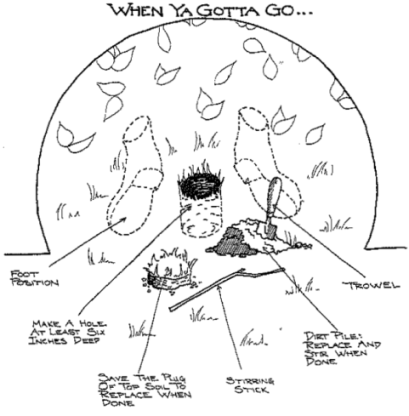For many parts of the U.S., this has been a serious winter! Tons of winter storms and feet and feet of snow. Hopefully, you put my last Outward Bound Handbook Series blog to good use and built yourself a snow cave on one of those “snow days” when schools and offices were closed. Well, fingers crossed, it’s just about time to put that lesson to rest for the season, and we’ll set forth on to summer backpacking tips. Yes, that’s right, its time for the third Hurricane Island Outward Bound School Handbook Installment: Leave No Trace Principles.
On the Colorado Front Range, we are beginning to see the first signs of spring. This morning I walked outside to chickadees chirping. Spring is on its way and the warm weather has me dreaming about backpacking in the high country, alpine environments, wildflowers and spring creeks formed out of mountain snow melt. We are lucky to have the opportunity to get out and enjoy such pristine and fragile environments and it’s our responsibility to protect them for others to enjoy. So, before your backpacking season ramps up, let’s review some basic Leave No Trace Principals:
Leave No Trace
When we try to pick out anything by itself, we find it hitched to everything else in the universe.
– John Muir

From its inception, Outward Bound has led the way in educating people about low-impact backcountry travel and helping them appreciate the earth’s limited natural resources. Many of the early guidelines for campers, hikers and backpackers used and recommended by the U.S. Forest Service and National Park Service originated in Outward Bound instructor manuals.
Today, all students are trained in Leave No Trace outdoor skills and ethics, which were developed in a coordinated effort between federal land agencies, wilderness educators, environmental scientists, and outdoor retailers and equipment manufacturers. Students are also introduced to the concept of environmental stewardship: an acceptance of personal responsibility for maintaining the health and beauty of the natural environment.
By living a simple, self-reliant, low-impact lifestyle in the wilderness, you have the opportunity to analyze firsthand the effect of human activities upon the environment and upon other users of the wilderness.
We hope that you are inspired to deepen your ties with nature and appreciate the value of preserving wilderness.
Leave No Trace Principals
Plan ahead and prepare
- Know the area and what to expect
- Select appropriate equipment
- Repackage food
Travel and camp on durable surfaces
- Hike on durable surfaces and spread out
- Keep group size small
- Select durable ground
- Use trails where they exist
- Avoid fragile vegetation
- Avoid places where impact is just beginning
- Chose a shelter site with a small slope
Dispose of waste properly
- Minimize soap and food residues in waste water
- Use soap sparingly when needed
- Pack out trash
- Dispose of human waste in catholes or outhouses
Leave what you find
- Minimize site alterations
- Avoid damaging live trees and plants
- Leave natural objects and cultural artifacts
Minimize campfire impacts
- Be aware of fire regulations
- Use only dead and downed wood if there is not a supply of driftwood
- In high-use areas, use existing fire rings
- In remote areas, use appropriate Leave No Trace techniques
Respect wildlife
- Enjoy wildlife from a distance
- Never feed wildlife
- Store food securely
- Minimize noise
- Avoid sensitive habitat
Be considerate of other visitors
- Avoid conflicts
- Minimize crowding
- Manage your pet
- Respect the privacy of other visitors
- Let nature’s sounds prevail
Resources:
Hampton, Bruce & Cole, David, Soft Paths
NOLS, Leave No Trace: Northeast Mountains
I hope the review of Leave No Trace Principles served as a good reminder to you before you head into the backcountry this summer. Happy summer camping!
OTHER POSTS YOU MAY LIKE
Read More
Read More
Read More




